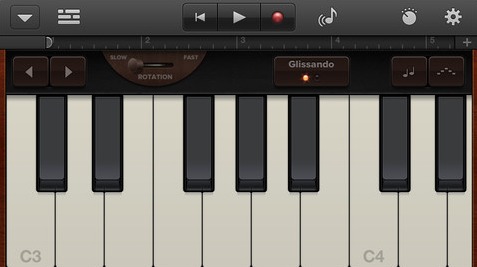Record and mix multiple tracks
Record and mix multiple tracks using a phone or tablet app, layering voice or instruments, adjusting volumes and simple effects to create a final song.



Step-by-step guide to record and mix multiple tracks using a phone or tablet app
How to Mix Your Songs in 8 Easy Steps
Step 1
Open your music recording app.
Step 2
Tap "New Project" or "Create" to start a fresh song file.
Step 3
Choose a simple beat or turn on the metronome to set the song speed.
Step 4
Add a new empty track in the app for your first sound.
Step 5
Arm the first track for recording by tapping its record button.
Step 6
Play your rhythm or instrument part while the app records.
Step 7
Press the stop button to end that recording.
Step 8
Press play to listen to the track you just recorded.
Step 9
Add a second track and arm it for recording.
Step 10
Sing or play a harmony or new part while the app records the second track.
Step 11
Stop the recording and listen to both tracks together.
Step 12
Move each track's volume slider to balance how loud they sound.
Step 13
Try adding one simple effect like reverb or echo to one track to make it sound cool.
Step 14
Export or bounce your mix to a single audio file.
Step 15
Share your finished song on DIY.org.
Final steps
You're almost there! Complete all the steps, bring your creation to life, post it, and conquer the challenge!


Help!?
What can we use if we don't have the exact music recording app, a real instrument, or a studio mic listed in the instructions?
Use a free recording app like GarageBand (iOS) or BandLab (Android/desktop), your phone or computer built-in mic to record claps, humming, or household percussion, and set tempo with the app’s metronome or by tapping your foot.
The app recorded silence or the second track sounds out of time—what should we check first?
Make sure you armed the correct empty track by tapping its record button, grant microphone permission to the app, verify the metronome or beat is playing while you record, and use headphones when overdubbing to avoid bleed and timing errors.
How can we adapt this multi-track project for younger kids or make it more challenging for older kids?
For young children, limit the session to a simple beat and one or two parts like claps and a short sung line with a parent controlling Record/Stop, while older kids can add more tracks, experiment with reverb/echo and volume sliders, and try arranging multiple sections before export.
What are simple ways to improve or personalize our finished song after following the basic steps to mix and export?
Try adding extra harmony or rhythm layers, apply a second effect (e.g., echo) to a track, use panning plus the volume sliders to give each part space, then export a high-quality bounce and design a cover image before sharing on DIY.org.
Watch videos on how to record and mix multiple tracks using a phone or tablet app
How to Mix Tracks in Soundtrap [Soundtrap 101 Tutorial]
Facts about digital music production for kids
🎸 Les Paul was an early pioneer of multitrack recording and used overdubbing to layer guitar parts as far back as the 1940s.
🏠 Many hit-sounding songs began in bedrooms or small home studios—artists have made professional tracks using just a laptop, phone, and creative mixing.
🎚️ Mixing is like cooking: you balance volume (levels), place sounds left or right (panning), and add effects like reverb or delay to make tracks fit together.
🎤 Overdubbing (recording one part at a time and stacking them) can make a solo singer or instrument sound like a full choir or band.
📱 You can turn a phone or tablet into a mini recording studio—apps like GarageBand, BandLab, and FL Studio Mobile let you record and mix multiple tracks.
How do you record and mix multiple tracks on a phone or tablet?
What materials do I need to record and mix tracks on a phone or tablet?
What ages is this activity suitable for?
What are the benefits of recording and mixing multiple tracks with children?


One subscription, many ways to play and learn.
Only $6.99 after trial. No credit card required
![How to Mix Tracks in Soundtrap [Soundtrap 101 Tutorial]](https://img.youtube.com/vi/JE_Dc8FieXg/mqdefault.jpg)


